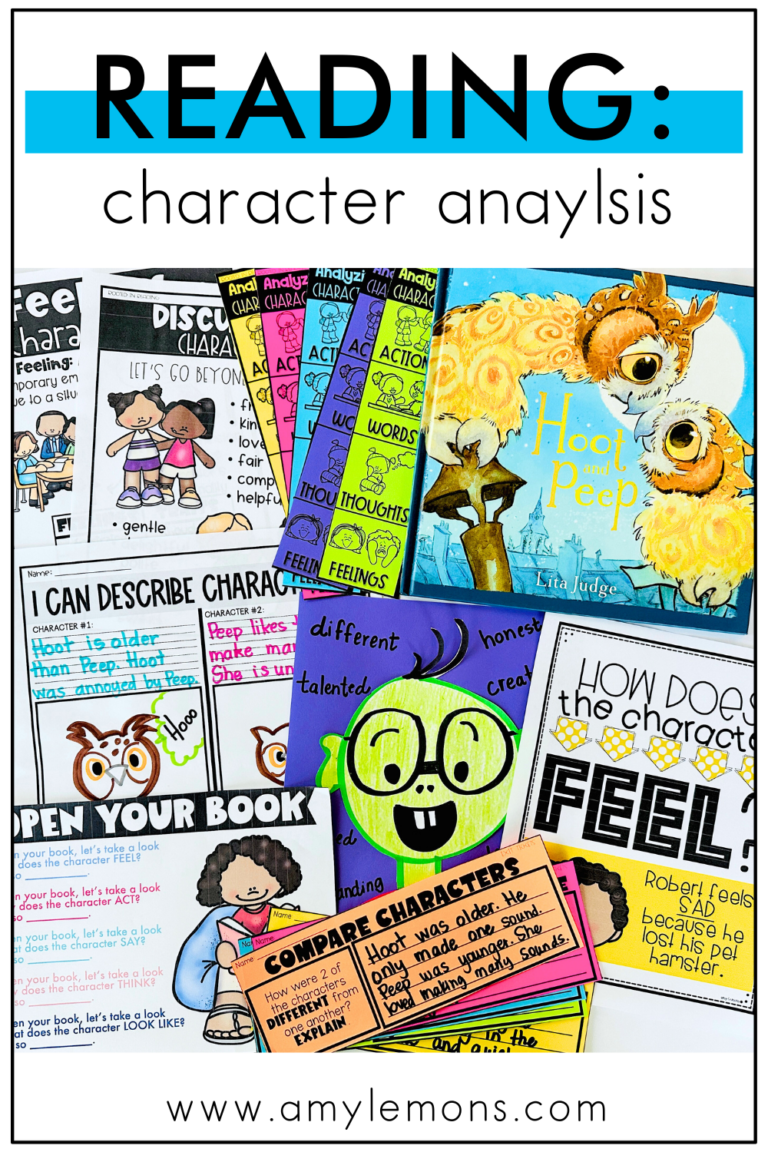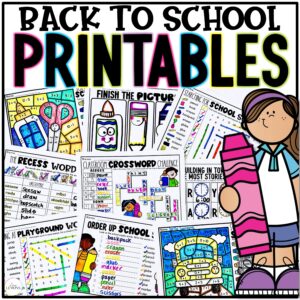

If there’s one thing I have an abundance of, it is summary activities. Over the years, I’ve accumulated quite an arsenal of activities for teaching summary strategies to students. I’ve found that helping students summarize a text is definitely about repetition but also, introducing the concept in new ways each time.
While I do enjoy switching things up throughout the year, I still have a small set of go-to’s for ensuring students get a well-rounded and consistent lesson. Today, I’ll be sharing 7 ideas for teaching students about writing a summary and I have some summary FREEBIES you can use immediately.
{Please note: Affiliate links have been used in this post but I only recommend products I actually use and enjoy!}
Before you ever pull out an activity, you’ll first want to find creative ways to introduce summarizing to your students. Three of my favorite ways to teach students how to summarize are with a chant, color coding, and posters.
Let’s start with the summary chant. For these activities, I’ll be focusing on summarizing using the 5 parts summarizing method for Somebody, Wanted, But, So, Then, or SWBST.
Before we ever jump into reading our story or summarizing anything, I like to introduce the concept with a chant because not only are they, in my opinion, undefeated in helping students memorize important concepts, but they also help energize your reading lesson and give students a point of reference as they work on summarizing throughout the week.
For this chant, I like to use my hand to symbolize the 5 parts of the strategy. Each finger can represent a different piece of their summary.
You can catch the rhythm of this chant and share it with your students here.
First things first, a group practice is a must! As a class, I love to use an anchor chart to summarize our story together. This is also when I like to introduce a color code for the 5 parts of the SWBST summarizing method.
In this example of an anchor chart from our Reading Toolkit for Summary and Central Idea, I coded the parts like this.
Each time we use this method to summarize, I ensure that the activities reflect these color schemes. Using the color code is just an extra way for students to associate the summarizing strategy with something familiar and each part with a color that they may be able to recognize before the words click.
It is by far one of my favorite ways to introduce strategies in the classroom. However, it is important that the colors are always accompanied by the words so students can still recognize their parts when color is absent.
I like to do a mix of both to ensure they are comprehending the lesson.
I am BIG on having mini posters displayed throughout the classroom for students to reference throughout the year for any subject, concept, or idea. This is true for the SWBST framework as well.
When students encounter these words each day, they are subconsciously drilling them into their little brains to use later in practice. There is never too much exposure when students are learning something new.
If you need some SWBST posters for your classroom, you’re in luck! You can grab these FREEBIES right HERE!
When I’m teaching students how to write a summary (or anything for that matter), hands-on activities are a MUST. It’s not enough to just complete worksheets, students crave fun activities that get their bodies moving and their brains creating. Here are a couple of ideas.
I love turning lessons into games the students can play together. Learning is a whole lot easier when you’re doing it as a team!
For this summarizing game, students practice identifying correct summary information by pulling various sentences from summary bags. I labeled 5 bags with one piece of the SWBST framework (Somebody, Wanted, But, etc.), and inside each bag are 5 sentence strips. Only one of the summary strips has the correct summary information.
Students take turns pulling strips until they find the answer!
In the past, I liked to make it more intriguing by offering a snack for each strip they get correct to create a summary trail mix. You can learn more about how I’ve used this activity and a look at the book I used in THIS post.
This summary craft can be used with any text but it lends itself perfectly to summarizing a fairytale or folktale. I just couldn’t resist creating a summary activity the students could wear!
To make these crowns, I printed Somebody, Wanted, But, So, Then on sticker labels and students simply attached them to sentence strips. After cutting out the summary crowns, they colored them and attached them to the sentence strips to make them into hats.
The small sticker labels help guide students in ensuring their summaries are short and concise. It’s essential they understand how to get to the main points and not dwell on the minor details.
Of course, you’ll want to test your student’s comprehension of using the SWBST strategy to make summaries. I like to use exit tickets and fun printables for this purpose.
Of course, it’s officially Turkey season, and what better way to roll it into your lesson plans than with a turkey summary!
You can test your student’s comprehension without having to bog them down with an assessment. You can use a character-themed printable, instead. Associating the activity back with the main character will help jog their memory, too.
In this example, we use the Turkey character from one of my favorite November books, Turkey Trouble, so students can create their summaries along its feathers. Each feather will represent one of the 5 elements in the SWBST strategy.
For this particular activity, I’m offering it to you as a FREEBIE to use in your classroom this month. You can use it with any turkey book you like! You’ll be able to grab it right at the end of this post.
When it is time to assess your students, I suggest exit tickets! We use these when we need to get a quick understanding of what level of understanding students have gained from the day’s lesson.
While exit tickets are not so much about grades, they are more efficient for creating a game plan of what you need to work on next for the following day or week’s lessons on the topic.
For summaries, I have students complete exit tickets where they will clearly explain each component of the story with separate tickets or sections for each piece of the SWBST framework.
I also like to include tickets for what they’ve learned about the story and tickets for them to create a short summary from the main points they pulled using Somebody, Wanted, But, So, Then.
To see how I pull all of this together, check out our Reading Toolkit for Summary and Central Idea.
If you need a set of activities, mini-lessons, anchor charts, and more to teach these important skills but don’t want to be tied to a specific book, then this is for you. Find it on my TPT shop HERE.
You can grab a copy of the turkey summary activity right here! Just use the form below and just in case, add [email protected] to your email address so you don’t miss it.

Hey, y’all! My name is Amy Lemons and I am passionate about providing students with both engaging and effective standards-based Math and ELA lessons.

Sample a day of Rooted in Reading with these lesson plans and activities for Reading Comprehension, Vocabulary, and Grammar!


